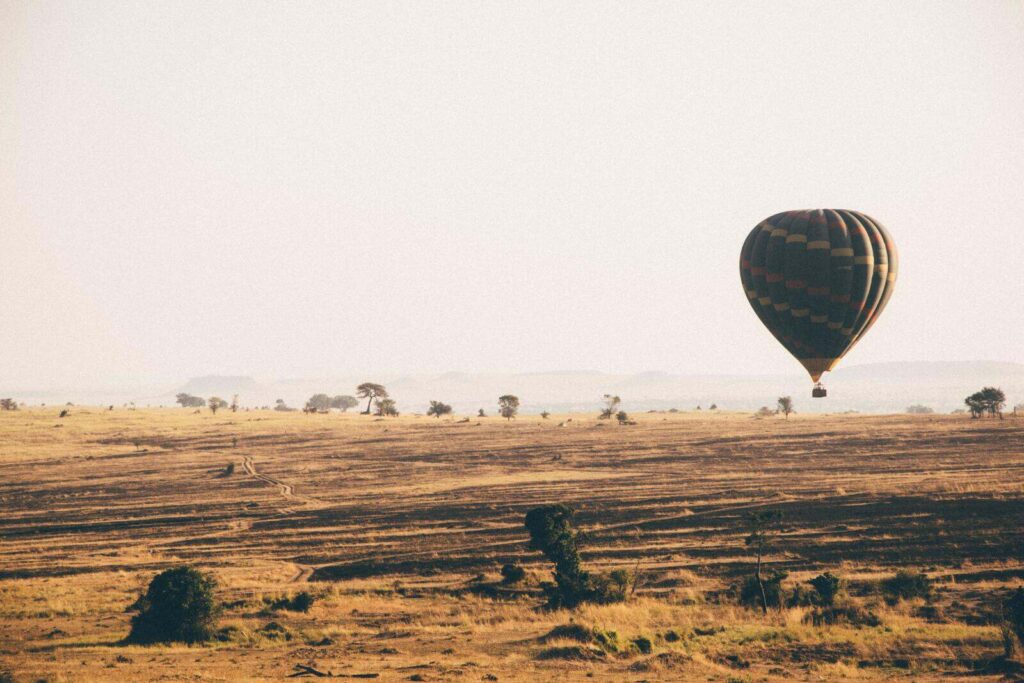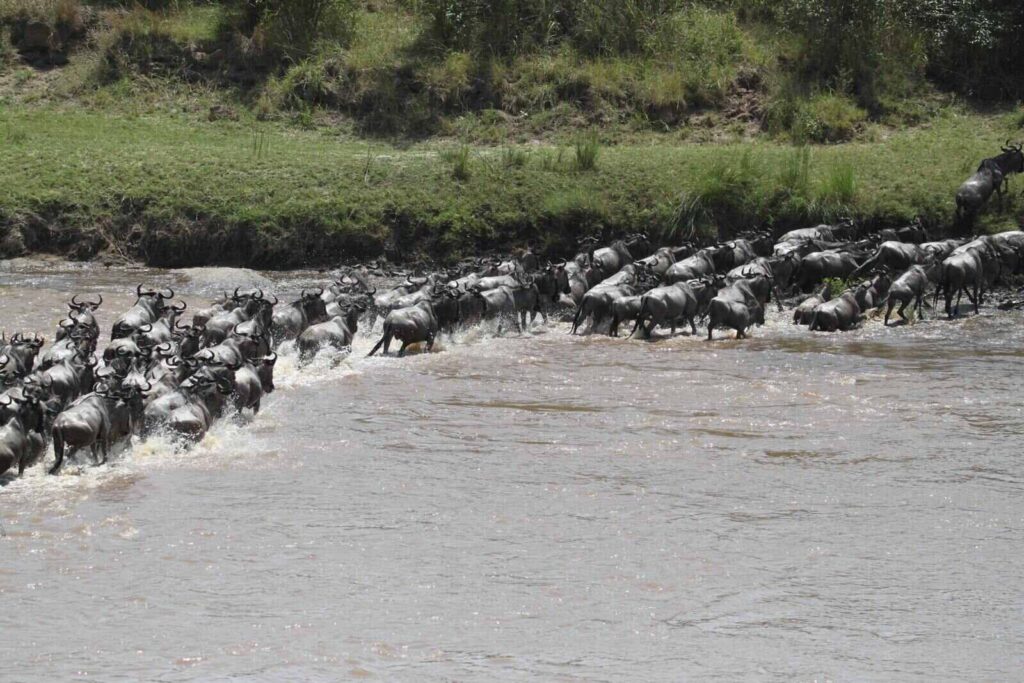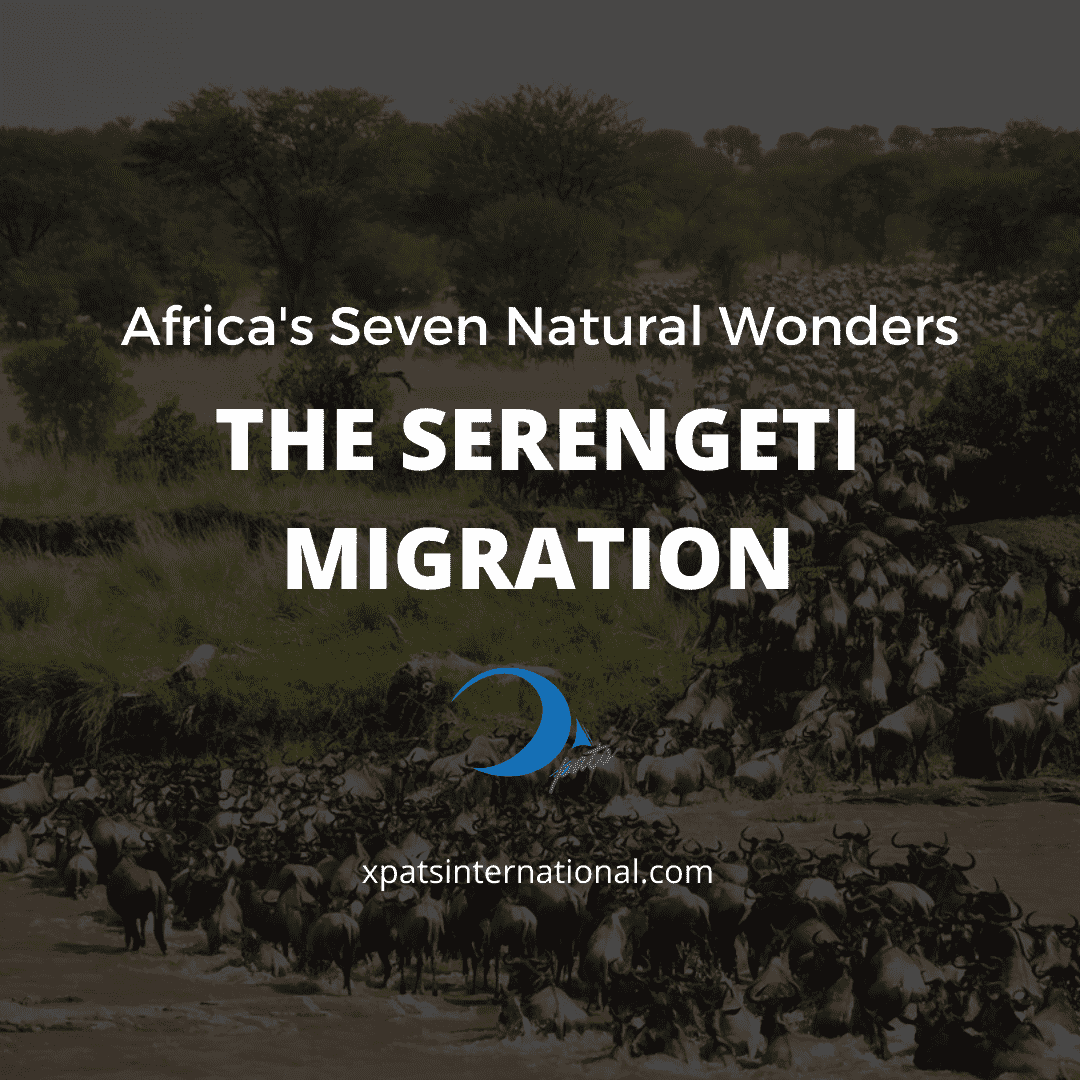The Serengeti migration is the world’s longest and most extensive overland migration. The Serengeti plains cover approximately 18,641 square miles, and the migration travels 500 miles from Tanzania to Kenya’s Masai Mara National Reserve. Tanzania and Kenya conserve over 80% of the Serengeti lowlands.
The Serengeti is home to more than 70 huge mammals and over 500 distinct bird species. The herds of wildebeest that blanket the plains are probably the most stunning feature of the migration. Every year, approximately 250,000 wildebeests are killed as a result of the migration.

The Serengeti Migration was named one of Africa’s seven natural wonders on February 11, 2013 in Arusha, Tanzania. Experts from all over the world voted, noting the essential statistical importance. The Serengeti Migration is a natural beauty shared by Tanzania and Kenya. The Serengeti Migration garnered the most votes, as well as the most first-place votes, making it the most well-known natural wonder.
WAYS TO SEE THE GREAT MIGRATION
The great migration can be seen up close and personal by either a 4×4 luxury safari vehicle, hot air balloon safari tour, or luxury campsite that sits along the migration trails. Many travellers prefer a combination of the three in order to fully utilize their vantage points during their tour.
4×4 Land Cruiser
The journey inside a safari car will provide the closest intimate interaction with wildlife of the Serengeti and the migration. If you want to see the wildebeest and other animals cross the river, you’ll need to be patient. The animals may feed for hours or days before swimming across the river. It may be as simple as sitting back in your Land Cruiser and watching them graze.

If you are fortunate enough to experience the dramatic river crossing, keep a lookout for river banks and wildlife swimming because the crocodiles have been waiting for them all year and are aware that they are approaching. It’s amazing to see a crocodile capture a wildebeest and wrestle its prize home.
The same may be true about following migrating animals. Lions and other predators are aware of the season and are actively hunting. Keep an eye out for stragglers and loners, as predators will be looking for them as well. Witnessing a lion hunting and killing as part of the migration is usually more interesting than seeing crocodiles make their kill. All of this generally needs a lot of patience and observation.
Air Balloon
Another peaceful experience is ballooning over the Serengeti. This experience allows you to appreciate the beauty and magnitude of the Serengeti as well as the vastness of the migrating species. The balloon will normally land somewhere in the Serengeti with breakfast waiting for you.

Luxury Camps
For those of you who would like to keep your distance, there are various camps in the Serengeti that are strategically placed in the park in order to offer the best viewing of the great spectacle. It’s a matter of sitting back with your iced coffee/tea and binoculars in hand and enjoying the view. These luxurious tents are often packaged with luxury game drives around the park to provide closer game viewing and an all-round camp experience.

BEST TIME TO SEE THE MIGRATION IN THE SERENGETI NATIONAL PARK TANZANIA
Though the best times to visit Serengeti National Park for a great migration safari in Tanzania is during the dry seasons (June to October and December to March), there are unique events occurring throughout the year. The Serengeti’s average temperature remains very stable throughout the year. Peak season in the region will be about 27°C (80°F) and low season will be around 14°C (57°F). In October, while the heard are up north, competition down the southern plains is at an all-time high among big cats due to a scarcity of food. This is an excellent time to see predator action before entering the short rainy seasons.
A series of brief rainstorms begin in early November. In late November to December, herds of wildebeest migrate to the Serengeti’s short grass plains. These are located near Ndutu, south to the east of Seronera, and north of the Ngorongoro Conservation Area (the famous Ngorongoro crater lies in the conservation area). Wildebeest and zebra roam these grasslands, feasting on the fresh, nutritious grasses. During the calving season (birthing season), the majority of wildebeest calves are born in a narrow window in February, and they stay in the area throughout late January, February, and March. They slowly expand west across these plains before embarking on their epic journey north in April.
By May, the Serengeti’s wildebeest migration starts north in search of fresh grass and water. Hundreds of thousands of animals form moving columns at Moru Kopjes and west of Seronera, joined by many zebras and a sprinkling of Thomson’s and Grant’s gazelles.

During June to August, the wildebeest migration move north, typically spreading out across a broad front: some crossing the Grumeti River Reserve and Ikorongo, while others pass into the Serengeti National Park’s center. Central Serengeti is far easier to spot animals month by month as they tend to gather around reservoirs for water. Visit the Serengeti during this time to see wild dogs easily scoop unsuspecting prey as they quench their thirst.
The herd moves across the northern Serengeti in September, when the Mara River river crossing becomes the migration’s most major stumbling block. From Kenya’s Maasai Mara Game Reserve, this river flows across the northern Serengeti. The sight of frantic herds of wildebeest crossing the Mara River can be breathtaking; situations of considerable distress and disarray are common. Herds frequently cross the Mara River north one day and then return south a few days later.
By October, over 1.5 million wildebeest are migrating in a more consistent pattern: they’re all heading south, via western Loliondo and the Serengeti National Park’s Lobo area, to the green shoots that grow after the rains in November on the southern Serengeti’s short-grass plains. Then the Serengeti Wildebeest Migration begins all over again.
PLACES TO STAY NEAR THE GREAT MIGRATION
The Legendary Serengeti National Park has a wide range of accommodation alternatives. From daring mobile tented camps following the Great Migration to family-friendly lodge-style accommodations and everything in between, you’re sure to find the ideal setting for you.
Serengeti permanent camps provide several sorts of tented lodgings for Serengeti safari adventures. They all feature pitched canvas or resin quarters on high stone or decking platforms, and some have en-suite bathrooms with antique or vintage-themed furniture. The safari camps are perfect for romantic getaways and honeymoon safari tours.

Seasonal Serengeti bush camps do not move. They operate in distinct places to capture specific seasonal experiences along the migration route.
Temporary tented Serengeti under canvas camps is established in government-allocated campgrounds that blend in with their surroundings, leaving a small environmental footprint. They offer flush bathrooms, open-air showers, comfy mattresses, basic lighting, and delicious campfire meals. These are regularly used during camp safaris.
Serengeti mobile camps (Serengeti migration camps) migrate two or three times a year to follow migratory herds. Most are small, opulent, and exclusive, and are located far from the main tourist routes; they combine great personal service with exceptional tracking skills to deliver the ultimate wilderness experience along with a safe safari encounter.

Serengeti safari lodges are solidly built complexes with individual chalets, cottages, or block structures arranged around a common dining area, reading lounge, restaurant, swimming pool, and bar. Depending on the Safari Tier chosen, these range from luxury suites to more modest value accommodation facilities that are tied to tier requirements for amenities, service, cuisine, and care based on your budget. Tier 1 lodges are luxury lodge establishments, tier 2 lean towards mid-range hospitality and budget lodges are camped at tier 3.
WAYS TO EXPERIENCE THE GREAT MIGRATION
When you’re ready to start planning your safari holidays, there are several safari packages that allow you to experience the Great Migration safari in style. The most popular Serengeti wildlife safari packages for the Serengeti migration include the 5 day Serengeti Migration safari tour package, the 4 day migration tour, 6 day wildebeest migration safari packages, and 7 day Tanzania migration safaris. These are private safaris/family safaris and are usually flexible. The 7-day standard safaris in Tanzania, the 6-day regular Serengeti safari tours, and 5-day safari game drives are all possibilities for individuals looking to get a glimpse of the Great Migration at a lower safari cost. Since these are budget safari tours, expect to visit multiple safari destinations along the northern circuit such as Tarangire National Park, Serengeti, Ngorongoro, and Lake Manyara. Parks along northern Tanzania are among the top destinations for African safaris. Though it’s possible to catch the migration on a four-day safari trip, it’s highly unlikely because the safari route rarely crosses the northern plains. The same may be said for a three-day Tanzania safari experience, which are often rushed.

On 2-day classic safaris and day trips, Serengeti migration tours are not included. Extensive 10-day, 14-day, and 15-day wildlife safari itineraries are popular among safari experts. These expeditions take place in both Kenya and Tanzania’s national parks.
WAYS TO GET TO THE GREAT MIGRATION
The majority of Serengeti safaris depart from Arusha. The best way to get there is to fly into Kilimanjaro International Airport (JRO), which is roughly 46 kilometers/29 miles from Arusha. It is also feasible to fly into Julius Nyerere International Airport (DAR), which is located just outside of Dar es Salaam, and then to Arusha Airport (ARK) or Kilimanjaro International Airport (JRO).

Flights from Arusha to many airstrips within the park are scheduled on a regular basis. It is also possible to drive. The trip is around 325km/202mi and will take approximately eight hours. It’s a bumpy trip, but it’s gorgeous, and you could encounter some wildlife along the way.



